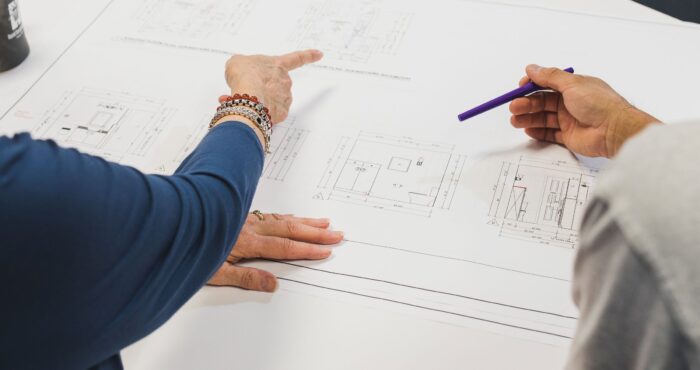
House remodeling is an exhilarating journey that transforms your living space into a reflection of your personal style and needs. However, without proper planning and a strategic workflow, this adventure can quickly become overwhelming. The significance of a well-thought-out approach cannot be overstated – it’s the backbone of a successful renovation project. By meticulously planning each step, you can ensure a smoother, more efficient remodeling process that aligns with your vision, budget, and timeline.
Assessing Needs and Setting Goals
Before diving into demolition, it’s crucial to assess your needs and set clear goals. This initial stage involves a thorough evaluation of your living space to identify which areas demand attention and renovation. Ask yourself: What do you aim to achieve with this remodel? Is it more space, enhanced functionality, or purely aesthetic changes? Setting these priorities early on guides your project, ensuring you focus on areas that will have the most significant impact on your daily life and overall satisfaction.

Establishing a Budget
Establishing a realistic budget is the cornerstone of any remodeling project. It’s essential to outline a financial plan that aligns with your renovation goals yet remains within your means. Start by researching the costs associated with your desired renovations and then allocate funds accordingly, ensuring you include a contingency for unexpected expenses. This financial blueprint will not only keep your project on track but also help in making informed decisions about materials, finishes, and labor.
Hiring Professionals
The expertise of seasoned professionals—architects, home remodeling contractors, and interior designers—can elevate your remodeling project to new heights. These experts bring invaluable knowledge, skills, and resources that can save you time, money, and headaches. When selecting professionals, prioritize experience, reputation, and communication style. Obtain multiple quotes to ensure competitive pricing and ask for references to gauge their reliability and quality of work. Additionally, consider their availability and willingness to collaborate closely with you, ensuring that your vision is realized accurately and efficiently throughout the renovation process.
Obtaining Necessary Permits
Navigating the permit process is a critical step in ensuring your remodel complies with local building codes and regulations. Obtaining the necessary permits before commencing work is not just a legal requirement; it’s a safeguard for your investment. The process involves submitting detailed plans and sometimes undergoing inspections. Familiarize yourself with your local building department’s requirements early to avoid delays and ensure your project moves forward smoothly. This proactive approach can also help in identifying any zoning issues or restrictions that could impact your project plans.

Structural Repairs and Upgrades
Prioritizing structural repairs and upgrades is paramount for the safety and integrity of your home. Issues such as foundation cracks, roof leaks, or structural damages should be addressed before cosmetic changes. These repairs not only ensure the longevity of your house but also prevent potential hazards. It’s wise to tackle these projects early in the remodeling process to provide a solid, safe structure for all subsequent renovations. Addressing these issues upfront can also offer peace of mind, knowing your home is secure and structurally sound.
Plumbing and Electrical Systems
Upgrading plumbing and electrical systems is essential for the functionality and safety of your home. These systems should be evaluated and possibly updated to support new appliances, lighting, and technology, ensuring they meet current standards. Work with licensed professionals to assess the condition of your existing systems and determine the scope of necessary upgrades. This step is crucial, especially in older homes, to prevent future problems and accommodate modern living requirements. Moreover, modernizing these systems can significantly improve your home’s energy efficiency and sustainability.
Interior Renovations
Interior renovations, such as updating kitchens and bathrooms, replacing flooring, and painting walls, significantly impact your home’s aesthetics and value. When planning these changes, consider the materials, colors, and finishes that will best complement your overall design vision. These decisions should reflect not only current trends but also durability and maintenance requirements. Thoughtful selection of materials and finishes can transform your space into a functional, stylish haven. Additionally, consider the flow and coherence between rooms to create a seamless transition throughout your home.

Exterior Improvements
Enhancing your home’s curb appeal through exterior improvements can dramatically increase its value and appeal. Projects like landscaping, siding replacement, window upgrades, and adding or renovating decks and patios not only beautify your home but also extend your living space outdoors. These improvements should align with the overall style of your home and neighborhood, creating a cohesive, attractive exterior that welcomes you every day. Moreover, selecting durable and low-maintenance materials can ensure your home’s exterior remains beautiful and functional for years to come.
Finishing Touches
The importance of finishing touches in a remodel cannot be overstated. Details such as the installation of fixtures, hardware, trim, and decorative elements play a crucial role in achieving a polished look. These final steps bring together all aspects of your renovation, highlighting the craftsmanship and design intent. Paying attention to these details ensures a finished project that looks complete and thoughtfully designed. Finishing touches are also an opportunity to personalize your space, adding unique features that reflect your style and preferences.
Final Inspections and Quality Checks
Conducting final inspections and quality checks is essential to ensure that the remodeling work meets your expectations and complies with all building codes. This final step is your opportunity to address any issues or deficiencies before considering the project complete. A thorough review of the work, ideally with your contractor, allows you to verify that all aspects of the remodel have been executed correctly and to your satisfaction. Engaging in this process also provides a final layer of assurance that your investment is protected and that your newly remodeled home is safe, functional, and beautiful.

Conclusion
Remodeling your house is a significant undertaking that requires careful planning, a well-defined budget, and the right team of professionals. By following a strategic workflow—from assessing needs and setting goals to conducting final inspections—you can ensure a smooth and successful renovation. Remember to prioritize structural integrity, functionality, and aesthetics while keeping an eye on the details. With thoughtful preparation and a clear vision, your remodeling project can transform your house into the home of your dreams.











